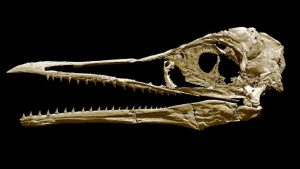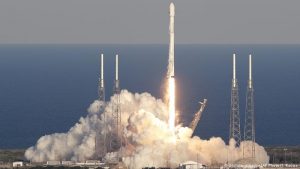
Poster: Avengers Infinity War (Marvel / Disney)
How many superheroes can you cram into a single movie before it becomes an unwieldy mess? That was my fear before I went to see the new Avengers movie from Marvel / Disney Productions.
I’m happy to report that my worries were groundless. Even with by my count twenty-one superheroes, Avengers Infinity War is both a very exciting and actually very well constructed story. Not only did the writers and production crew manage to give all the big named stars at least a few scenes where they get to say some important lines. They also succeeded in keeping the story flowing along without making it look like they were giving all the big named stars etc. etc.
Part of the secret is just following the old formula KISS (Keep It Simple Stupid). The plot is really simple. The bad guy Thanos is on a mission to acquire (i.e. steal) the six Infinity Stones that will give him infinite power. Can’t get much simpler than that.

Another trick is to break your twenty-one superheroes into separate groups. Thor meets up with The Guardians of the Galaxy, the God of Thunder and Rocket the raccoon actually work really well together. Then Iron Man, Doctor Strange and Spiderman are on a spaceship toward the Bad Guy’s home planet while Captain America is back on Earth getting everybody else organized for the big battle at the end. It’s important that the writer’s keep the scenes moving back and forth seamlessly between these groups but if they can do so it can actually keep the audience from getting confused, or bored.



One thing you can’t make simple is the characterizations and that’s one of the advantages of a series of movies like the Marvel Universe. With one exception all of these actors have already played their character several times and hence knows how to play the character and how the public expects their character to behave.
The one exception is the bad guy Thanos; he may have made a couple of brief appearances in earlier Marvel Movies but this is the first time he’s a major character so it’s important that Thanos doesn’t become just a cardboard villain. Once again the writers have done their job by making Thanos crazy, psychopathic and absolutely certain that he’s the good guy!
Now I’m not going to give away too much of what happens in Avengers Infinity War but I will say that the ending was quite unexpected. I will give away one little secret however. Marvel movies often have a short scene either during or at the very end of the credits. This scene gives a clue to what’s to what’s going to happen in a future movie. Well in Avengers Infinity War you have to wait until the very end of the credits if you want to see it!
Avengers Infinity War was undoubtedly a difficult movie to make, there really is just a lot going on. However, it is definitely a success both as a story and as a spectacle. If the writer’s, producers and production teams at Marvel / Disney keep up the quality it seems to me as if the Marvel Universe will be turning out the blockbusters for quite a few more years to come.









































